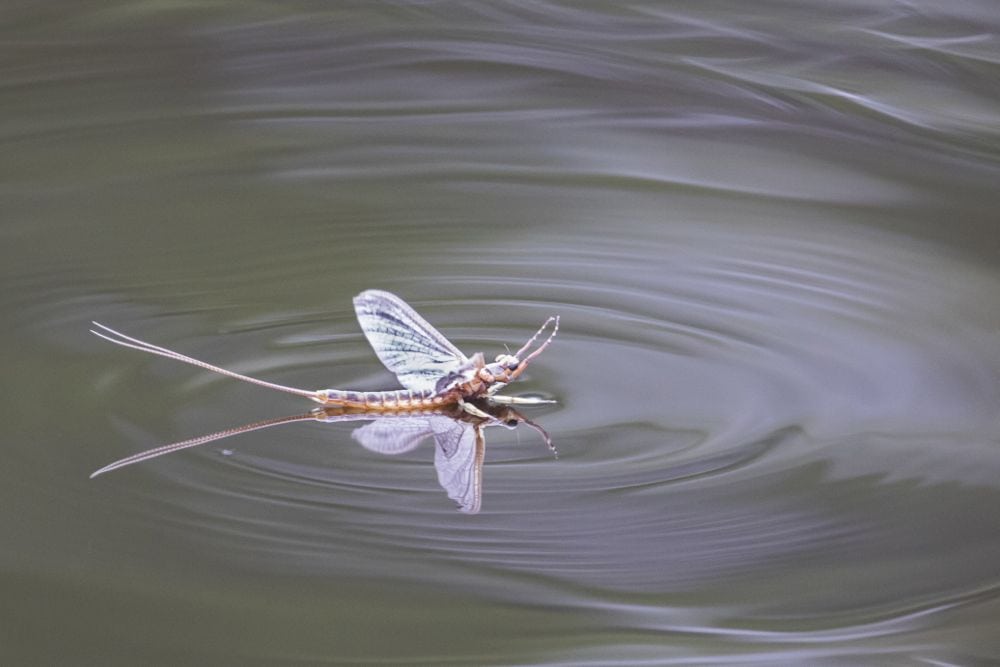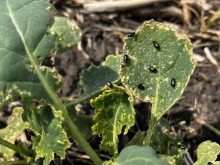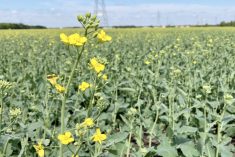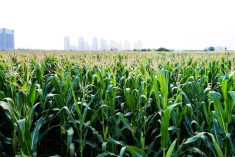A federal proposal to protect aquatic insect habitat by cancelling all registered outdoor uses for two popular ag insecticides has been walked back in a major way.
Health Canada on Wednesday announced its special review decisions on the risks to aquatic bug life from the use of clothianidin and thiamethoxam, both pesticides and seed treatments from the neonicotinoid (“neonic”) class.
The health department launched a special review of the neonics in 2016, leading to a 2018 preliminary decision calling for a phased-in ban on outdoor use of the chemicals. However, it said Wednesday it would instead be “updating” some of the products’ registered uses and introducing “additional mitigation measures and restrictions” on uses that remain registered.
Read Also

U.S. grains: Corn rebounds from contract lows on short covering, bargain buying
Bargain buying and short covering lifted U.S. corn futures on Monday after the market slid to contract lows on expectations for strong U.S. output, traders said.
Clothianidin is an active ingredient in ag chem products including BASF’s Titan and Poncho, Bayer’s Prosper, Emesto and Sepresto and Valent’s Nipsit, Clutch and Arena. Thiamethoxam, meanwhile, is marketed by Syngenta under brands including Helix, Cruiser and Actara, among others.
For thiamethoxam, Health Canada will cancel the chemical’s uses in soil drench application on potato crops and foliar application on lowbush blueberries. For clothianidin, in-furrow application on potato crops and seed treatment for field-sown leafy vegetables and bunching onion will be cancelled.
Among changes in label use for clothianidin, new or revised spray buffer zones will be put in effect around freshwater habitats, plus:
- maximum seed treatment rates for field corn will be cut to 150 grams of active ingredient (g.a.i.) per 100 kg of seed, which cancels its use on corn rootworm;
- maximum seed treatment rate per year per hectare (ha) on vegetables is limited to 100 g a.i., limiting the planting rates for broccoli, bulb onion, carrot, cabbage, cucumber and leek;
- foliar use on cucurbits is cut to a single application of 70 g a.i./ha per season, cancelling its use for brown marmorated stink bug;
- foliar use on potatoes is reduced to a single application of 52.5 g a.i./ha per season;
- foliar use on turf is cut to a single application of 125 g a.i./ha per season, cancelling its use against hairy chinch bug, annual bluegrass weevil, bluegrass billbug and European crane fly; and
- greenhouse seed treatment use for onion maggot and seed corn maggot on bulb onions will be cancelled, “as these are only pests found in field production.”
New or revised spray buffer zones will also be required around freshwater and terrestrial habitats for use of thiamethoxam, among other restrictions including:
- a lower maximum seed treatment rate for field corn (including seed corn production), at 200 g.a.i./100 kg of seed, thus cancelling its use also against corn rootworm;
- a lower maximum seed treatment rate for soybean, at 30 g a.i./100 kg of seed, cancelling uses against bean leaf beetle, European chafer, soybean aphid and wireworm;
- lower soil drench and in-furrow rates for leafy vegetables, at 90 g a.i./ha, cancelling those uses against cabbage looper, beet armyworm, corn earworm and fall armyworm;
- lower soil drench and in-furrow rate for brassica vegetables, at 90 g a.i./ha, cancelling uses against dipteran leafminers, cabbage looper, diamondback moth, imported cabbageworm, thrips, beet armyworm, corn earworm, fall armyworm and yellowstriped armyworm;
- a lower limit of one foliar application per year on dry shelled bean, potato and soybean;
- one foliar application per year against all pests on celeriac and for pepper weevil on peppers;
- for use against stink bug, tarnished plant bug and brown marmorated stink bug in fruiting vegetables, a limit of one application at the top application rate (52.5 g a.i./ha) per year;
- one foliar application per year on cranberry; and
- a requirement to hold flood water for 30 days for cranberries that require flooding.
Health Canada said its scientists “have reviewed a large body of scientific information and concluded that a complete ban on neonicotinoid pesticides is not warranted,” and the new mitigation actions “will address the risks posed to aquatic insects.”
Revised labels reflecting the new rules must be in place “no later than 24 months from today,” Health Canada said, while “a small number of uses for which there are no suitable alternatives will continue for an additional 24 months.”
New information collected during the reviews “allowed the department to determine that some uses do not pose a risk to aquatic insects, while other uses do pose risks of concern,” Health Canada said.
During its consultations in 2018, “concerns were identified by Health Canada from available scientific information that these two pesticides are frequently being detected in aquatic environments in Canada at concentrations that may pose a risk to aquatic insects,” among them important food sources for fish, birds and other animals.
But from that point, “more than 47,000” comments were received, along with several new scientific papers plus new studies and water monitoring data from product registrants, provinces, academia and other regulatory authorities.
The final special review decisions in both cases were delayed until now from last fall’s target dates “due to the unprecedented volume of information received during consultation and the challenges of the COVID-19 pandemic,” Health Canada said Wednesday.
Health Canada has scheduled webinars in English and French for April 15 to provide an overview of the special review decisions. The registration deadline for those webinars is April 12.
‘Not convinced’
Canola grower groups on Wednesday cheered the new final decision, which they said found that current use of the two products, including seed treatment, by canola farmers “does not pose an unacceptable risk to aquatic invertebrates.”
“This is great news for canola farmers as it maintains our ability to protect the canola crop at its earliest stages of development,” Mike Ammeter, chair of the Canadian Canola Growers Association (CCGA), said in a release.
“Flea beetles can dramatically reduce stand viability if not controlled early and maintaining access to these products is important for the environmental and economic sustainability of the crop.”
CropLife Canada, which represents plant biotech and ag chem companies, was also “pleased” with many aspects of the final review.
However, CropLife CEO Pierre Petelle said in a statement Wednesday, “unfortunately, in some cases — specifically in the horticulture sector — many important uses of these products will be restricted, and in some cases, removed entirely” which “may jeopardize the viability of certain types of production in Canada.”
Overall, though, Petelle said it’s “encouraging to see science prevail as (Health Canada’s Pest Management Regulatory Agency) has changed its recommendations from what appeared in the proposed decision from 2018.”
Neonic product registrants and other stakeholders “provided PMRA with significant amounts of additional high-quality data during the consultation period, which appears to have helped the agency make a more informed, risk-based decision based on the best available real-world data.”
Environmental groups, meanwhile, were less than pleased with PMRA stepping off its 2018 position.
“It is outrageous that Canada’s pesticide regulator is not delivering on its own proposed ban on neonics. European countries stopped using these chemicals years ago,” Beatrice Olivastri, CEO of Friends of the Earth Canada, said in a release Wednesday. “These neonics posed unacceptable risks four years ago, so what happened to make them safe today?”
“We are not convinced that tinkering with label restrictions will be effective in reducing concentrations of neonics in the environment,” Charlotte Dawe, a campaigner with the Wilderness Committee, said in the same release. “Certainly it will be less effective than the originally proposed ban.”
Health Canada said Wednesday it also plans to release a final re-evaluation decision for another neonic, imidacloprid, later this year, and is “in the final stages” of completing that review. — Glacier FarmMedia Network




















